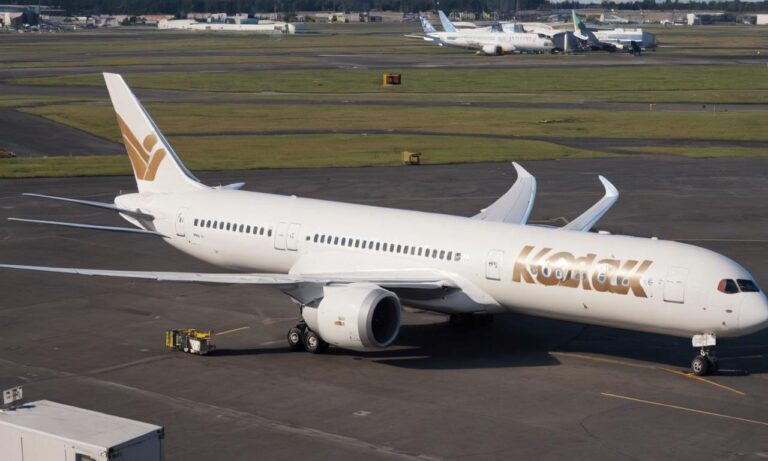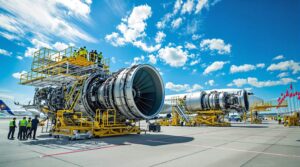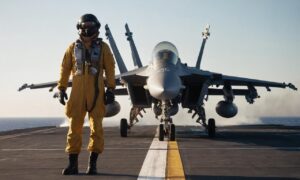Welcome to our comprehensive guide on the seating capacity of the Boeing 787-9, a marvel of modern aviation technology. As aviation enthusiasts and travelers alike seek detailed information, we delve into the specifics to provide you with a thorough understanding of the seating arrangements aboard this state-of-the-art aircraft.
The Boeing 787-9 Overview
The Boeing 787-9 is part of the Dreamliner series, designed and manufactured by Boeing Commercial Airplanes. This aircraft is an extended version of the original 787-8, offering increased passenger capacity and improved fuel efficiency. As we focus on the question at hand, let’s explore the intricacies of the seating configuration on the Boeing 787-9.
Seating Capacity and Layout
The seating capacity of the Boeing 787-9 can vary slightly depending on the airline’s specific configuration and preferences. However, as a general guideline, the typical seating capacity ranges from approximately 240 to 290 passengers in a two-class layout. This typically includes business class and economy class sections.
Now, let’s break down the seating layout further:
| Cabin Class | Number of Seats |
|---|---|
| Business Class | Varies, typically 30-40 seats |
| Economy Class | Varies, typically 210-250 seats |
It’s important to note that these numbers are approximate, and airlines have the flexibility to customize the seating arrangement based on their specific requirements and the preferences of their passengers.
Comfort and Innovations
The Boeing 787-9 is renowned for its passenger-centric design, offering enhanced comfort and innovative features. From larger windows that provide stunning views to improved cabin pressurization for reduced fatigue, every aspect is carefully crafted to enhance the overall flying experience.
Passengers in business class often enjoy lie-flat seats, direct aisle access, and an array of in-flight entertainment options. Economy class passengers benefit from ergonomic seating and entertainment systems designed to make long-haul flights more enjoyable.
In conclusion, the seating capacity of the Boeing 787-9 varies based on the airline’s configuration, with a typical range of 240 to 290 passengers. The aircraft’s design prioritizes passenger comfort and modern amenities, making it a popular choice for long-haul journeys around the globe.
Fuel Efficiency and Sustainability
One of the remarkable features of the Boeing 787-9 is its commitment to fuel efficiency and sustainability. With advanced aerodynamics and the use of composite materials, the aircraft consumes less fuel compared to its predecessors. This not only reduces operational costs for airlines but also contributes to a more eco-friendly aviation industry, aligning with the global push towards sustainable practices.
Environmental Impact
As airlines increasingly prioritize environmentally conscious practices, the Boeing 787-9 stands out for its reduced carbon footprint. The use of innovative technologies and materials not only improves fuel efficiency but also minimizes emissions, making it an attractive choice for carriers aiming to enhance their environmental responsibility.
| Environmental Factor | Boeing 787-9 Advantage |
|---|---|
| Fuel Efficiency | Reduces fuel consumption by a significant margin |
| Emissions | Lower carbon footprint compared to traditional aircraft |
Frequently Asked Questions
- Q: Can the seating configuration be customized by airlines?
- Q: What amenities are available in business class?
- Q: How does the Boeing 787-9 contribute to sustainability?
A: Yes, airlines have the flexibility to customize the seating arrangement based on their specific needs and passenger preferences. This may include variations in the number of seats in business and economy classes.
A: Business class passengers often enjoy lie-flat seats, direct aisle access, and a range of in-flight entertainment options, providing a premium and comfortable travel experience.
A: The aircraft’s advanced aerodynamics and use of composite materials contribute to improved fuel efficiency, reducing both operational costs for airlines and the overall environmental impact of air travel.
Technological Advancements
Beyond its seating capacity, the Boeing 787-9 incorporates cutting-edge technological advancements. The aircraft features state-of-the-art avionics, including advanced navigation systems and communication tools. These technologies not only enhance safety but also contribute to smoother and more efficient flights, positioning the 787-9 as a flagship for modern aviation innovation.






